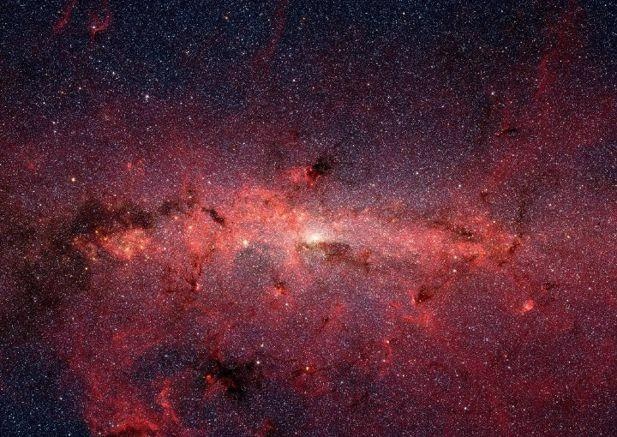May 18 2021
Researchers from the University of Birmingham have successfully dated some of the oldest stars in the Milky Way galaxy with unmatched precision. They achieved this by combining data from oscillations of the stars with data on their chemical composition.

Image Credit: NASA.
Led by the University of Birmingham, the research team surveyed about a hundred red giant stars and could determine that a few of the stars were actually part of a satellite galaxy known as Gaia-Enceladus, which collided with the Milky Way early in its history.
The findings of the study have been published in Nature Astronomy and show that the surveyed group of stars all have similar ages or are somewhat younger compared to most of the stars known to have started their lives within the Milky Way.
This confirms current theories proposing that the Milky Way had already started evolving a considerable portion of its stars when the merger with the Gaia-Enceladus (also called the Gaia Sausage) took place.
When the collision occurred, the Milky Way was already efficiently forming stars, a majority of which can now be found within its thick disk, one of two disk-like structures constituting the Galaxy.
The lead author of the study is Josefina Montalbán from the School of Physics and Astronomy at the University of Birmingham.
The chemical composition, location and motion of the stars we can observe today in the Milky Way contain precious information about their origin. As we increase our knowledge of how and when these stars were formed, we can start to better understand how the merger of Gaia-Enceladus with the Milky Way affected the evolution of our Galaxy.
Josefina Montalbán, Study Lead Author, School of Physics and Astronomy, University of Birmingham
For performing the calculations, the researchers used asteroseismology data from the Kepler satellite together with data from the APOGEE and Gaia instruments. All three instruments have been configured to collect data to help researchers map and characterize stars in the Milky Way.
Asteroseismology is a comparatively new method for measuring the relative frequencies and amplitudes of the natural modes of the stars’ oscillation. This allows researchers to gather information related to the size and internal structure of the star, which facilitates precise calculation of the star’s age to be made.
In this study, the researchers employed data on the individual oscillation modes of each star, instead of averaged properties of their pulsations. They could also use asteroseismology together with spectroscopy—which allows the chemical composition of the stars to be quantified.
We have shown the huge potential of asteroseismology in combination with spectroscopy to deliver precise, accurate relative ages for individual, very old, stars. Taken together, these measurements contribute to sharpen our view on the early years of our Galaxy and promise a bright future for Galactic archeoastronomy.
Andrea Miglio, Study Co-Author and Professor, University of Bologna
The study is the culmination of the collaborative project, Asterochonometry, financially supported by the European Research Council and hosted by the Università di Bologna and the University of Birmingham. The study was also supported by the Science and Technology Facilities Council through a doctoral studentship.
Journal Reference:
Montalbán, J., et al. (2021) Chronologically dating the early assembly of the Milky Way. Nature Astronomy. doi.org/10.1038/s41550-021-01347-7.